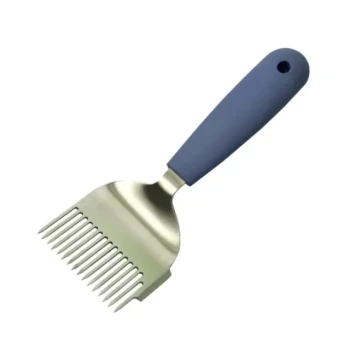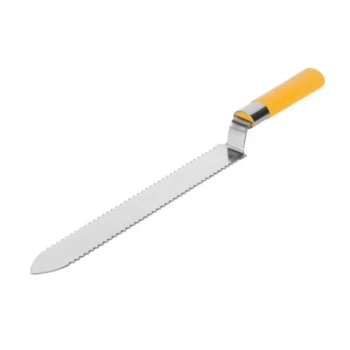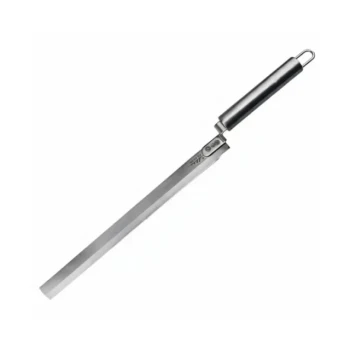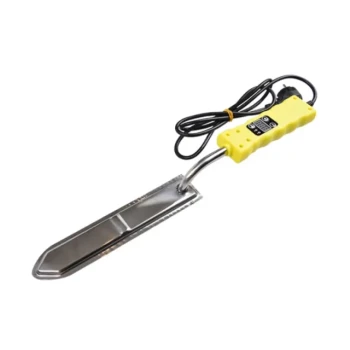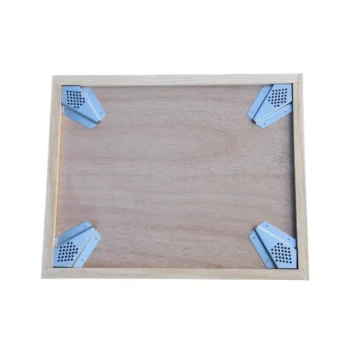Bees extract nectar from flowers using a long, specialized tongue called a proboscis. This complex anatomical tool allows them to reach deep into a flower's nectaries to lap up the sugary liquid. The process is not merely drinking; it is the first critical step in a sophisticated manufacturing chain that turns raw floral resources into energy-rich honey.
Nectar collection is a precise mechanical act that initiates an immediate biochemical transformation. A bee uses its tongue to gather the fluid, stores it in a separate "honey stomach," and introduces enzymes that begin converting it into honey before the bee even returns to its hive.
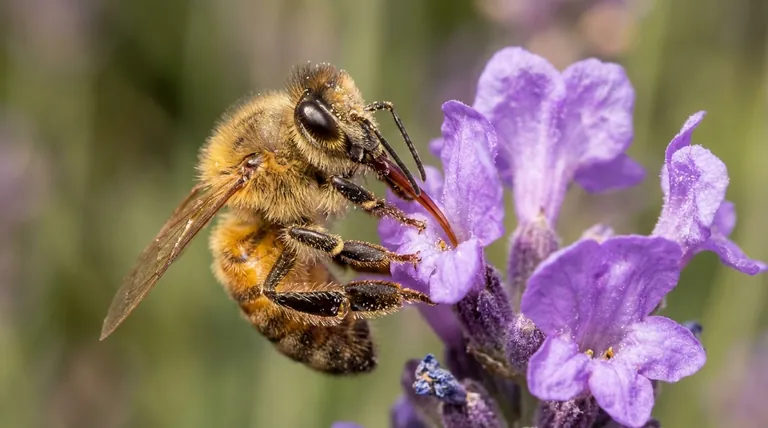
The Anatomy of Nectar Collection
To understand how a bee extracts nectar, we must first look at the specific tool it uses for the job. This is not a simple straw but a highly evolved and efficient piece of biological machinery.
The Proboscis: A Bee's Multi-Tool
A bee's mouthparts include a long, flexible, and hairy tongue known as the glossa, which is the central part of the proboscis.
When a bee lands on a flower, it extends this proboscis deep into the blossom to reach the nectaries, where the sweet liquid is stored.
The Lapping Mechanism
The hairy tip of the glossa repeatedly laps up the nectar. The liquid adheres to the hairs and is then drawn up a central tube in the proboscis through capillary action and suction.
This lapping motion is incredibly fast and efficient, allowing the bee to collect a full load of nectar from dozens or even hundreds of flowers on a single trip.
From Flower to Storage: The Journey of Nectar
Once the nectar is drawn up the proboscis, its journey has only just begun. It is not consumed for immediate energy but is instead prepared for transport and long-term storage.
The Honey Stomach (Crop)
The collected nectar does not go into the bee's digestive stomach. Instead, it is diverted into a special internal sac called the crop, or "honey stomach."
This sac is essentially a biological carrying container, keeping the raw nectar separate from the bee's own digestive system. A bee can carry a load of nectar nearly equal to its own body weight.
Initiating the Transformation
As soon as the nectar enters the honey stomach, the bee adds enzymes from its salivary glands.
One of the most important enzymes is invertase. It immediately begins breaking down the complex sucrose in the nectar into two simpler sugars: glucose and fructose. This enzymatic action also begins to alter the nectar's pH, a key step in creating honey and protecting it from bacteria.
Understanding the Process: Nectar vs. Honey
A common misunderstanding is to equate the nectar bees collect with the honey we consume. They are fundamentally different substances, and the bee's work is what drives this crucial transformation.
Nectar is the Raw Ingredient
Flower nectar is primarily sucrose and water. Its water content can be as high as 80%, making it far too diluted and susceptible to spoilage for long-term storage.
Dehydration is Essential
Once back at the hive, the forager bee regurgitates the nectar-enzyme mix, passing it to other worker bees. These bees continue the process, eventually depositing the liquid into honeycomb cells.
The bees then vigorously fan their wings over the honeycomb, creating airflow that evaporates the excess water. This dehydration process reduces the water content to below 20%, concentrating the sugars.
Honey is the Final Product
This combination of enzymatic breakdown (sucrose to fructose and glucose) and dehydration is what transforms perishable nectar into stable, energy-dense honey. The low water content and acidity of honey make it incredibly resistant to bacteria and fungi.
Applying This Understanding
The process of nectar extraction is a perfect example of biological efficiency, where a simple act is tied to a complex chemical process.
- If your primary focus is the physical extraction: Understand that the bee's proboscis is a sophisticated lapping and sucking tool, not just a simple straw.
- If your primary focus is the biological process: Recognize that nectar is immediately stored in a special honey stomach where enzymes begin breaking it down on the journey back to the hive.
- If your primary focus is the creation of honey: Remember that nectar extraction is just the first step, followed by critical enzymatic conversion and dehydration to create the final product.
From a single flower to a honeycomb cell, every step is a masterclass in natural engineering.
Summary Table:
| Key Stage | Primary Action | Key Component |
|---|---|---|
| Extraction | Lapping up liquid from nectaries | Proboscis (glossa) |
| Transport | Storing and carrying the load | Honey Stomach (Crop) |
| Transformation | Breaking down sucrose | Enzyme Invertase |
| Final Product | Evaporating water to preserve | Honey |
Equip Your Apiary with the Best
Just as bees rely on specialized anatomy for peak efficiency, commercial beekeepers and distributors depend on high-quality equipment for success. HONESTBEE supplies durable, reliable beekeeping supplies and equipment through wholesale-focused operations, helping your business thrive.
Contact our team today to discuss your wholesale needs and discover how our products can support your operation's productivity and honey yield.
Visual Guide
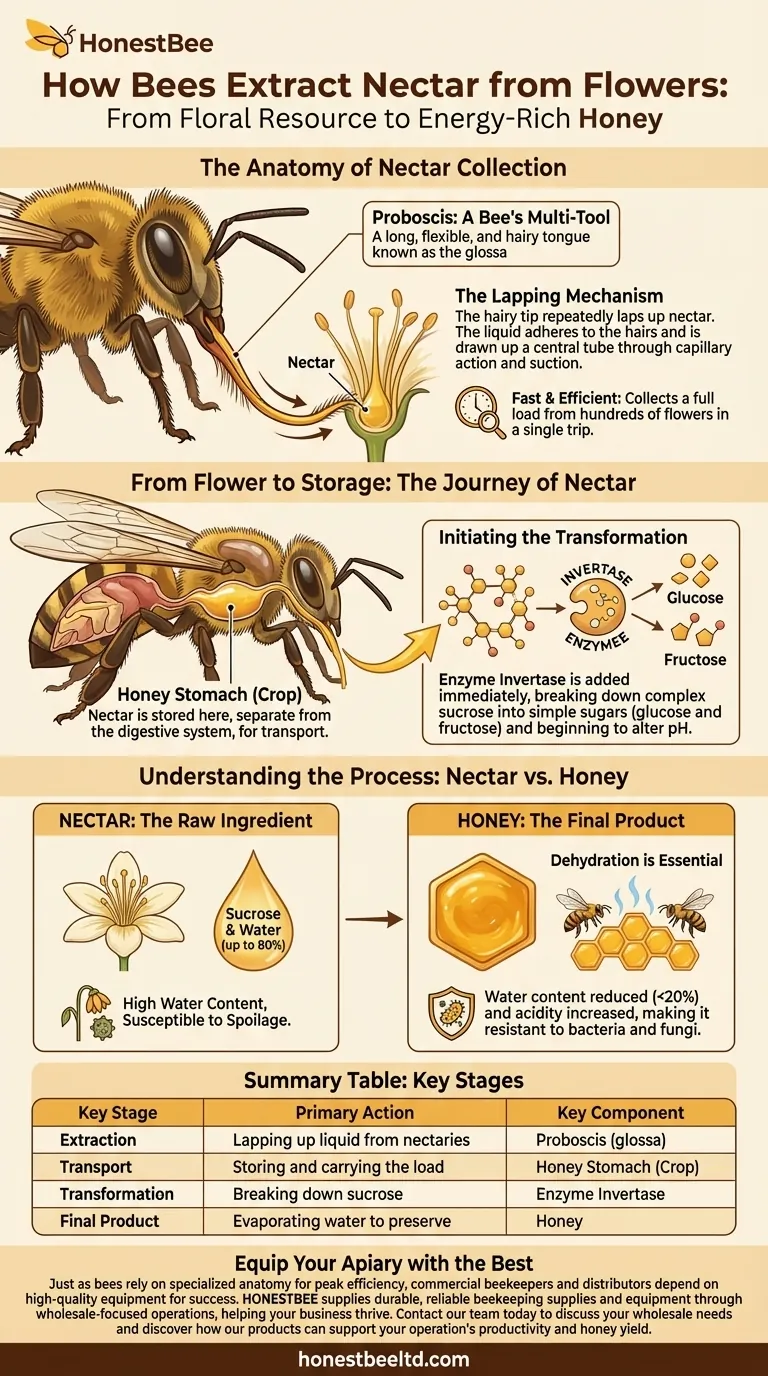
Related Products
- High Performance Cordless Electric Bee Shaker for Beekeeping
- Ergonomic High Visibility Plastic Frame Grip Handles
- Professional Multi-Function Uncapping Fork with Ergonomic Rubber Grip
- Professional Serrated Double-Sided Uncapping Knife for Beekeeping
- Professional All-Stainless Steel Uncapping Knife for Beekeeping
People Also Ask
- What are some potential benefits of drones in a bee colony? Enhancing Hive Health and Productivity
- What are the main parts of a bee smoker? Essential Components for Calm Hive Management
- How does a steam wax melter work? A Fast, Efficient Method for High-Quality Wax
- How does smoke affect bee behavior during hive inspections? Master the Smoker for Safer Inspections
- Why is a bee smoker essential? Master Safe & Efficient Hive Management


